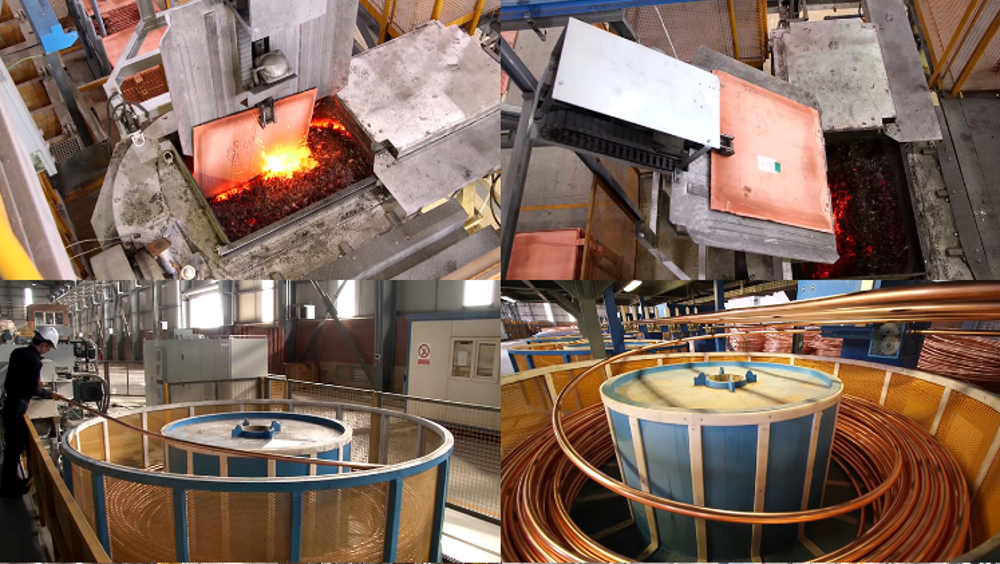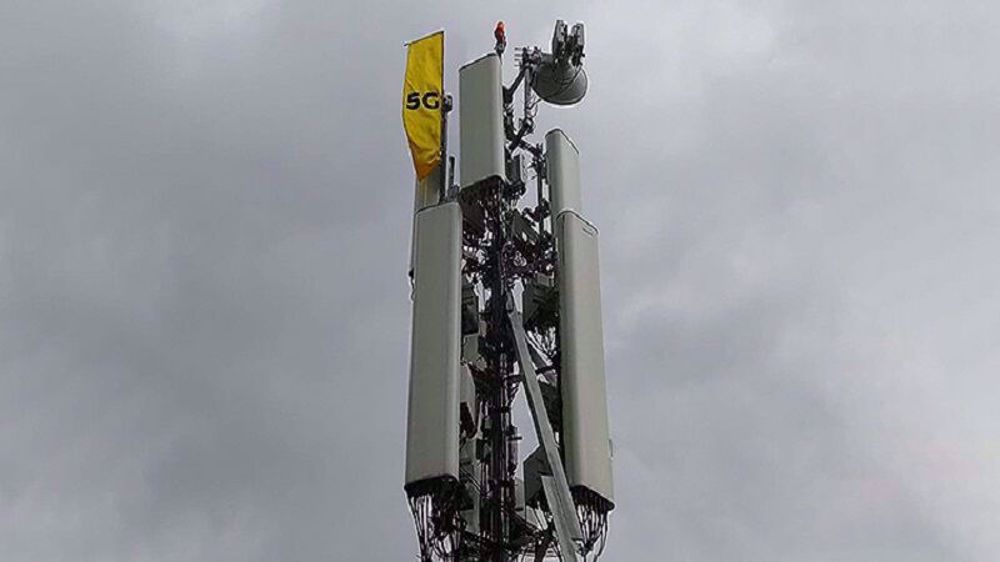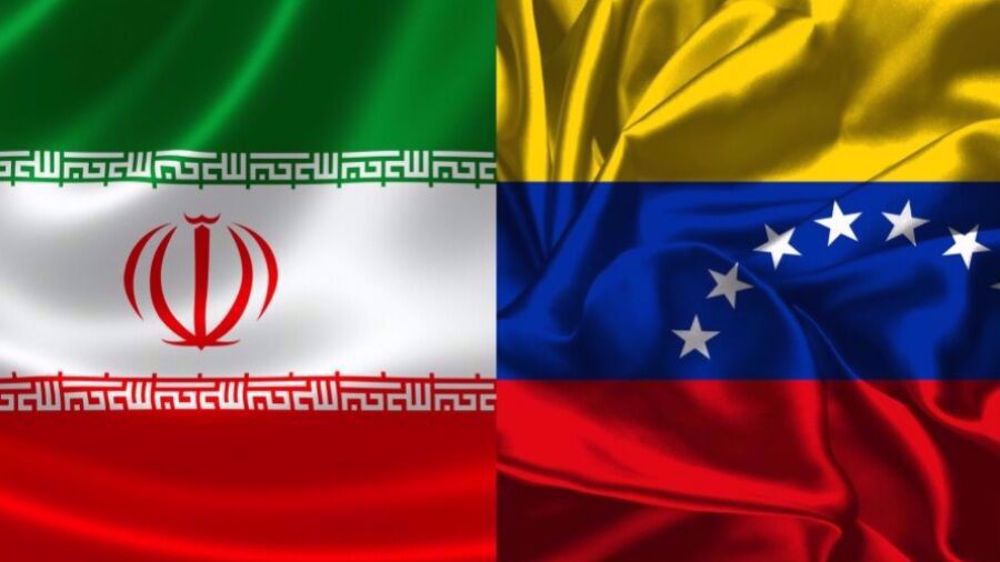Iran opens 50,000-tonne copper cathodes project
Iran has launched a new project to produce 50,000 tonnes of copper cathodes a year, using bioleaching technology which the plant's CEO calls revolutionary.
The project owned by the Iranian Babak Copper Co. (IBCCO) and carried out with 40 trillion rials ($166 million) of investment was inaugurated by President Hassan Rouhani via videoconference on Thursday.
Copper cathodes are a basic form of copper used to make products such as copper rods and tubes.
The plant is located in Shahr-e Babak in Kerman province, home to the Middle East's largest open cast copper mine.
It uses tank bioleaching process (metal solubilization by microorganisms) which is considered an environmental-friendly and economic method for separating copper from copper sulfide.
"With this opening, we will see the introduction of the latest environmental-friendly technology in the production of copper cathodes to Iran and the world, which will pave the way for a new revolution in copper cathode production," IBCCO Managing Director Mohammad Reza Mirzaei said.
"The most important factor that makes this production complex an unparalleled example in the world is the use of bioleaching technology for the first time in the world on an industrial scale," he added.
The opening of the project, Mirzaei said, provides sustainable direct employment for 400 people.
IBCCO is a subsidiary of the Middle East Industries Development Holding Company (MIDHCO) which has initiated copper industry projects since 2010.
As of 2020, Iran produced about 309,000 tonnes of copper, according to data from the World Bureau of Metal Statistics. It aims to boost that to 800,000 tonnes by 2025.
The National Iranian Copper Industry Company (NICICO) operates the country’s three major copper mines of Sarcheshmeh, Sungun and Miduk which have combined reserves of 3.4 billion tonnes.
The Sarcheshmeh copper mine in the southeast Kerman province is the world's second largest. It holds over 826 million tonnes of proven and 1.2 billion tonnes of estimated reserves alongside substantial amounts of other minerals including molybdenum, gold, silver and rare metals.
The Sungun mine in East Azarbaijan province is Iran’s second largest copper operation with over 470 million tonnes of proven and 1 billion tonnes of potential reserves. The third major copper mine is Miduk in Kerman, that holds 170 million tonnes of proven copper reserves.
NICICO Chief Executive Ardeshir Saad-Mohammadi said Thursday he expects a new copper mine named Seridoon to become operational in Kerman with 1.5 million tonnes of reserves by March 2022.
He said 29 projects have been defined to raise Iran's copper cathode production to 600,000 tonnes a year, making the country the 10th largest producer of the vital material for the power and construction industries.
"With this program, we hope that our revenue from copper production will increase to $4.5 billion," he told Tasnim news agency.
Iran has about 37 billion tonnes of proven mineral reserves and 57 billion tonnes of potential reserves, worth $800 billion according to 2014 data on state-owned mines and metal holding company IMIDRO’s website.
"To be honest, this is definitely not an exact number,” Deputy Minister of Industry, Mining and Trade Mehdi Karbasian said in August.
“Today, we only know about mines that are open; in other words, we have information up to depth of 100 and 150 meters of land, and we declare our reserves based on that, while we have not yet gone to the mines at great depths,” he said.
Like developed countries such as South Korea, Japan, and even Australia and South America, where mining has shifted from the land to the oceans, “if we go down to the deep mines, we will surely achieve very positive results,” Karbasian said.
However, the extractives industry in Iran is underdeveloped and mineral products account for only 0.6 percent of its GDP.
Oil has been the primary source of foreign currency for decades which, on the flip side, has relegated other industries to the fringes.
But with its oil industry under a strict sanctions regime which has cut revenues, the country is beginning to take stock of its other resources and mining is emerging as a new field which Iran can count on for revenue generation.
Iran has 300 million tonnes of lead and zinc reserves but the sector is largely underdeveloped. As of 2020, Iran produced about 132,000 tonnes of zinc and around 50,000 tonnes of lead.
The two largest mines are Mehdiabad in central Yazd province with 16.5 million tonnes of zinc ore reserves and the Angouran mine in Zanjan province with 9 million tonnes.
Iran is estimated to have around 2.7 billion tonnes of iron ore reserves. The Chadermalu, Golgohar and Sangan mines are considered the largest iron ore mines in the country.
It also has 250 tonnes of gold reserves. In 2014, Iran launched the Zarshuran plant in northwest Takab, which it billed as the biggest gold processing operation in the Middle East.
The country is a rising steel power. It was ranked 10th among global producers after output rose 10.7% to 7.5 million tonnes in the first quarter of this year, according to the World Steel Association.
Iran produced 29.3 million tonnes of steel in 2020, up 13.4 percent year on year. It aims to increase that to 52 million by 2025.
Trump floats ‘Dream Military’ fueled by record $1.5-trillion budget
Iran: US interventionism aimed at inciting violence, terrorism
VIDEO | Tunisian parties denounce Trump’s foreign policy as violation of intl. law
Trump’s immigration crackdown turns deadly; president says killer acted in ‘self-defense’
VIDEO | Trump renews highly aggressive rhetoric towards Iran
VIDEO | Transatlantic tensions: Greenland
VIDEO | Yemen’s Saudi-backed government expands control amid coalition strikes on separatists
Iran expects slight increase in domestic wheat purchases











 This makes it easy to access the Press TV website
This makes it easy to access the Press TV website